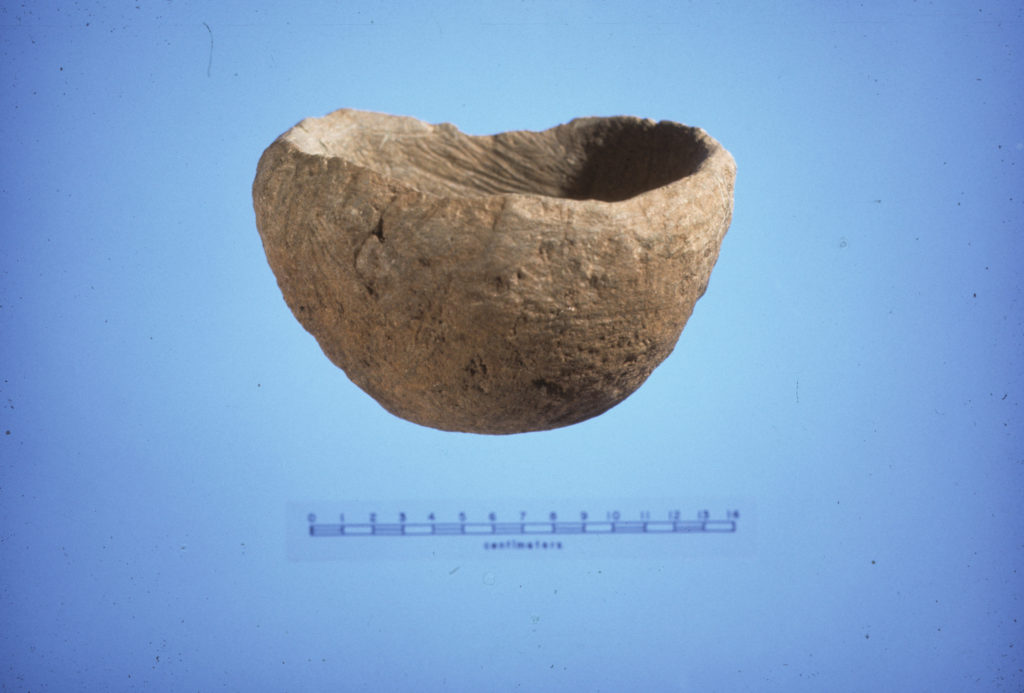15TH-CENTURY CHEROKEE OF THE SWANNANOA VALLEY: TOWN LIFE IN THE MISSISSIPPIAN PERIOD
Ancient Cherokee women controlled agriculture, gathered wild foods and medicines, and guided their households.
“The Cherokees say that they have always been here in the southern mountains, that the Creator put them here. The first man and first woman, Kanati and Selu, lived at Shining Rock Wilderness, near present-day Waynesville, and the first Cherokee village was at Kituhwa Mound, near present-day Bryson City. ”
Barbara R. Duncan and Brett Riggs, Cherokee Heritage Trails Guidebook
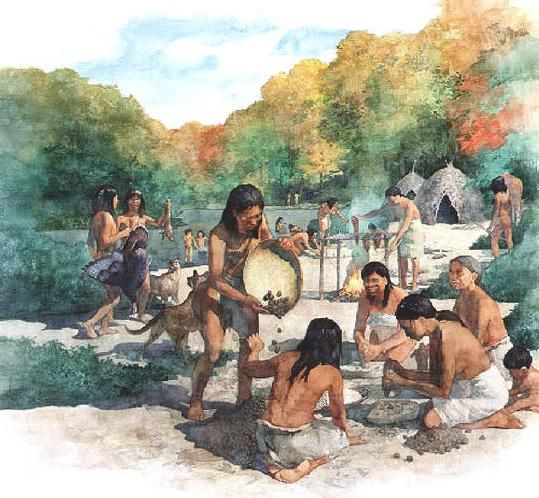
The University of Tennessee, Knoxville.
By the 1400s, American Indian communities of many identities and cultures had already been a part of the Swannanoa Valley for over 8,000 years, enjoying the valley’s waterways, fertile soil, and access to biodiverse forests and fields. In fact, it is likely that the word “Swannanoa” is a corruption of the Cherokee term “Suwalinunnahi,” which refers to a Native trade route that passed through the Swannanoa Valley and exited at the Swannanoa Gap.
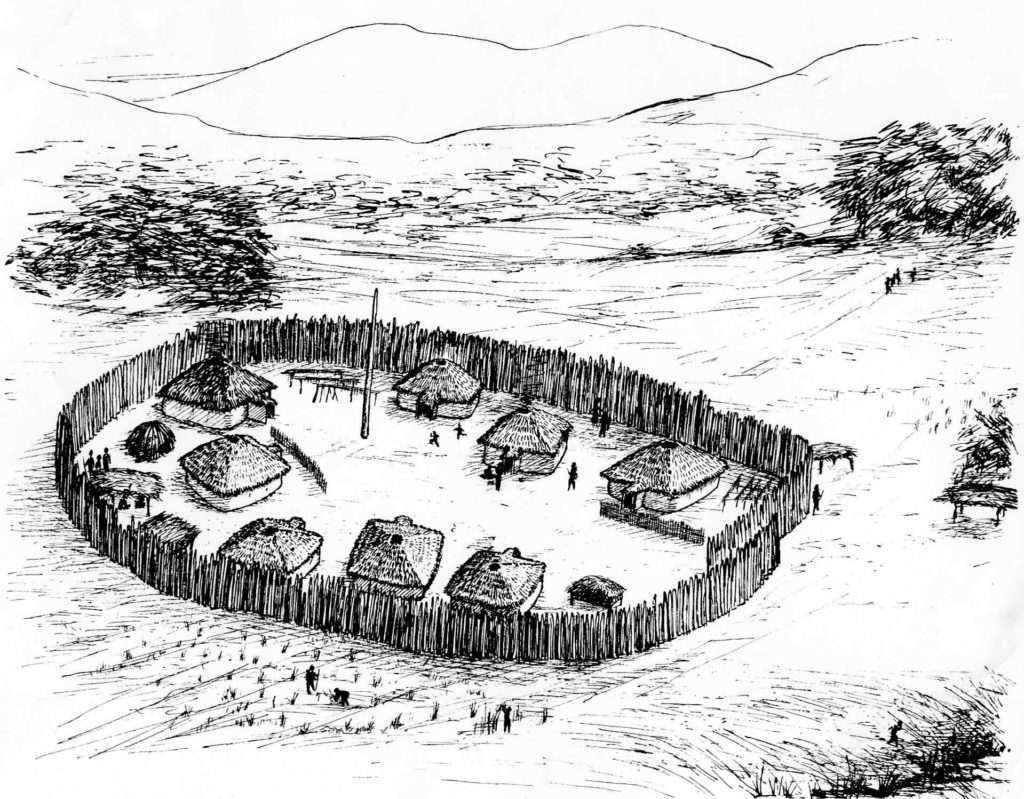
From roughly 1200 to 1500 AD, Natives of the Mississippian culture built a permanent, settled town along the Swannanoa River, where the campus of Warren Wilson College is today. These townspeople were likely ancestors of the modern-day Cherokee, or “Tsalagi.” Based on extensive excavations of the site performed by archaeologists and our knowledge of the ways of life of the Cherokee in later centuries, we can imagine what the lives of men and women in the community might have looked like in the early 1400s.
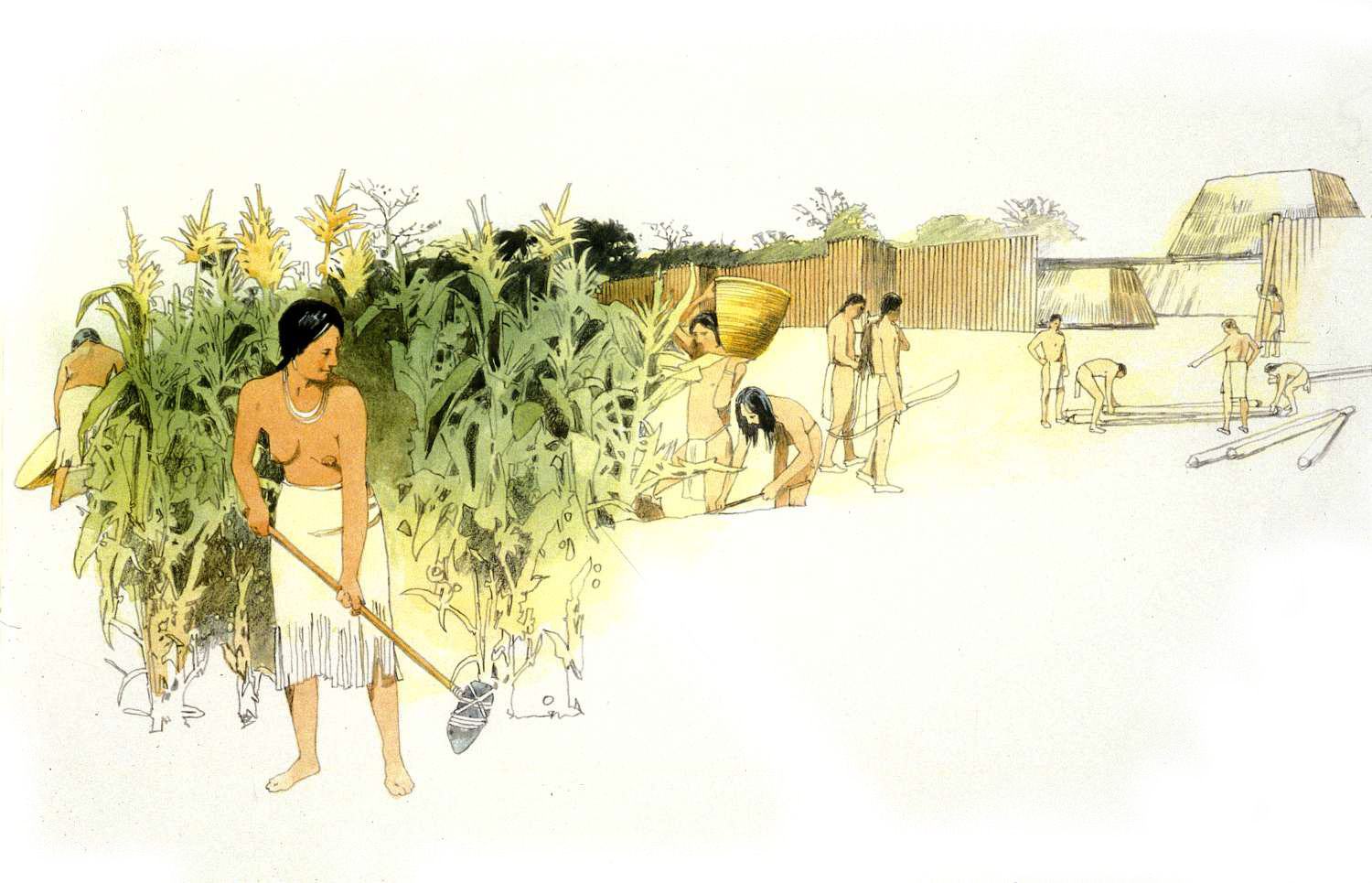
A typical woman in the town would spend much of her time growing crops, foraging, and preparing food for her community. In the warmer months she would work with other women in the fields outside the village tending to the corn, beans, tobacco, sumpweed (a plant in the sunflower family), pumpkins and squash that grew in the rich soil of the Swannanoa’s floodplain. She might take a break from her labor to forage in the nearby woods to harvest wild greens for a meal or to find herbs for medicine making. Later in the fall, she would return to these same forests to forage for acorns, walnuts, hickory nuts and butternuts- an essential part of the diet of her community. Like Cherokee women in later centuries, a typical woman in this village likely owned her own home and fields, made decisions for her clan, and passed her property on to her daughter.
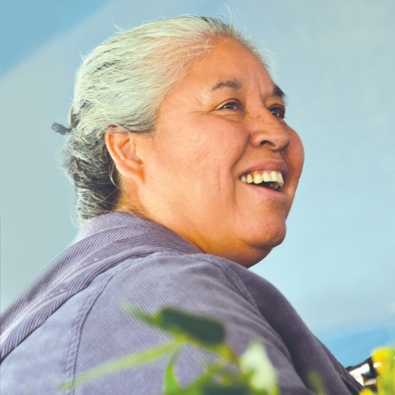
“In the spring, we have wild greens. All the different kinds. And then the berries start– strawberries, and then blackberries, blueberries, raspberries. And then when the berries are done, in the fall, the nuts come in– hickory, walnut, butternut– all the kinds you could want. And if we plant a garden, the land gives us so much–corn, beans, squash….Being a Cherokee Indian, that’s what I was raised with, living off the land.”
–Marie Junaluska, member of the Eastern Band of Cherokee and Cherokee language specialist.
EXPLORE ARTIFACTS FOUND AT THE WARREN WILSON EXCAVATION SITE
Pisgah Complicated Stamped jar fragment.
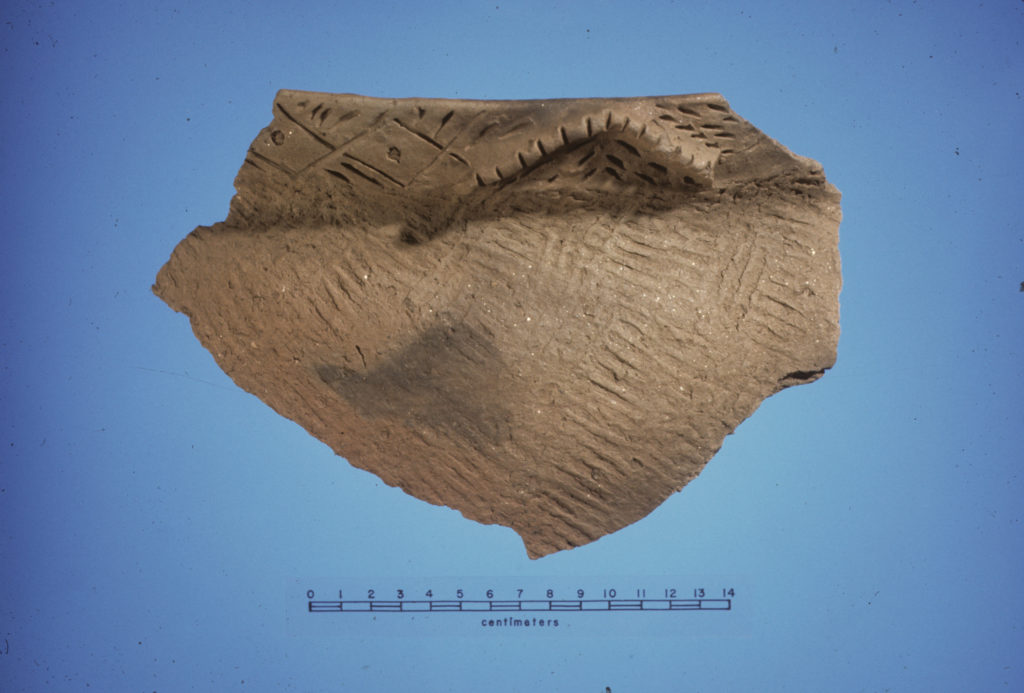
Clay animal effigy
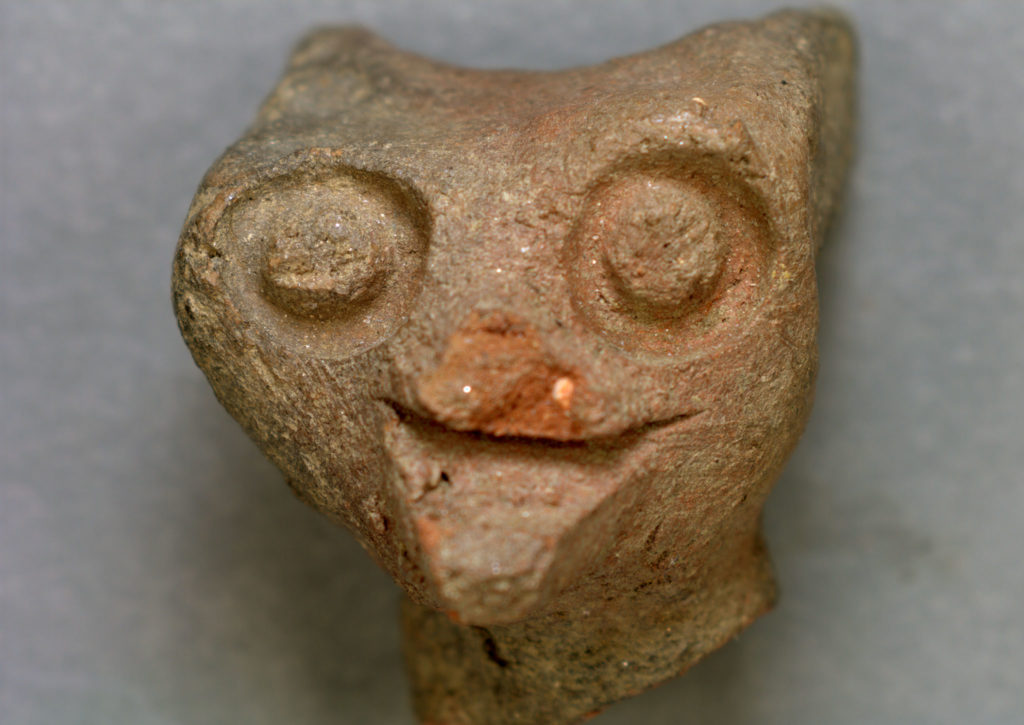
Shell gorget
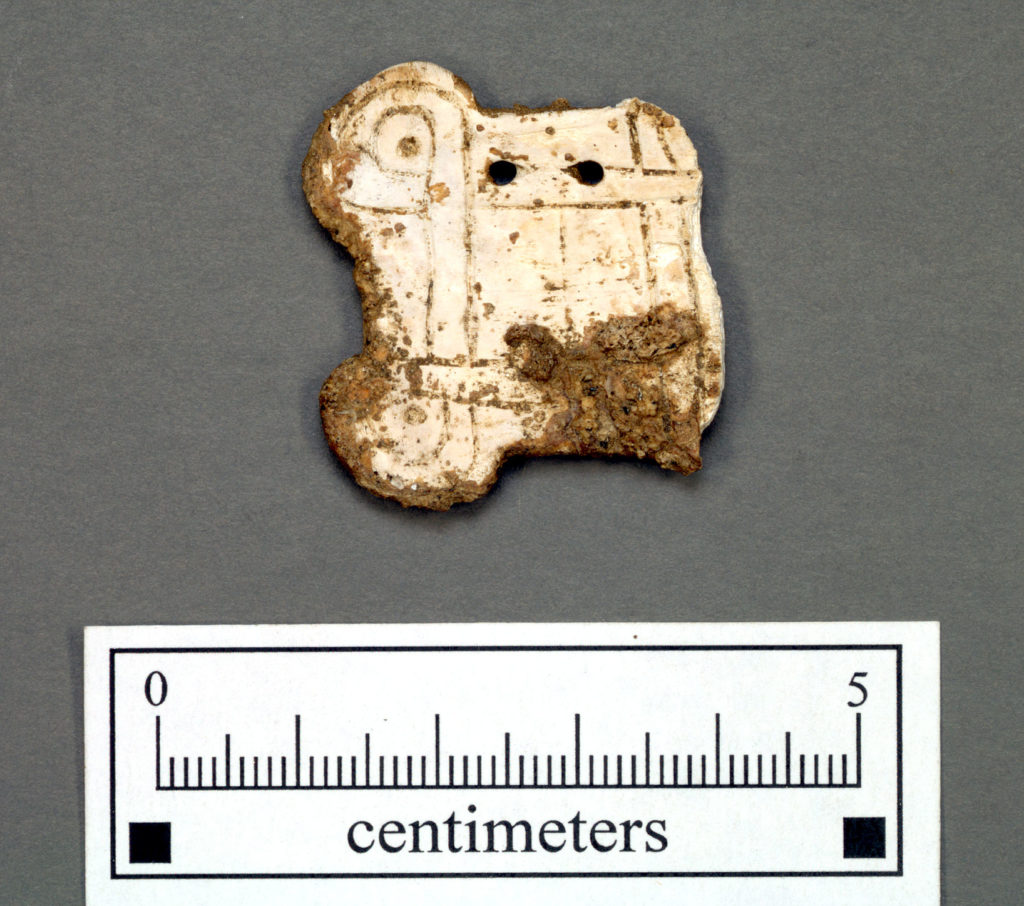
Spear points
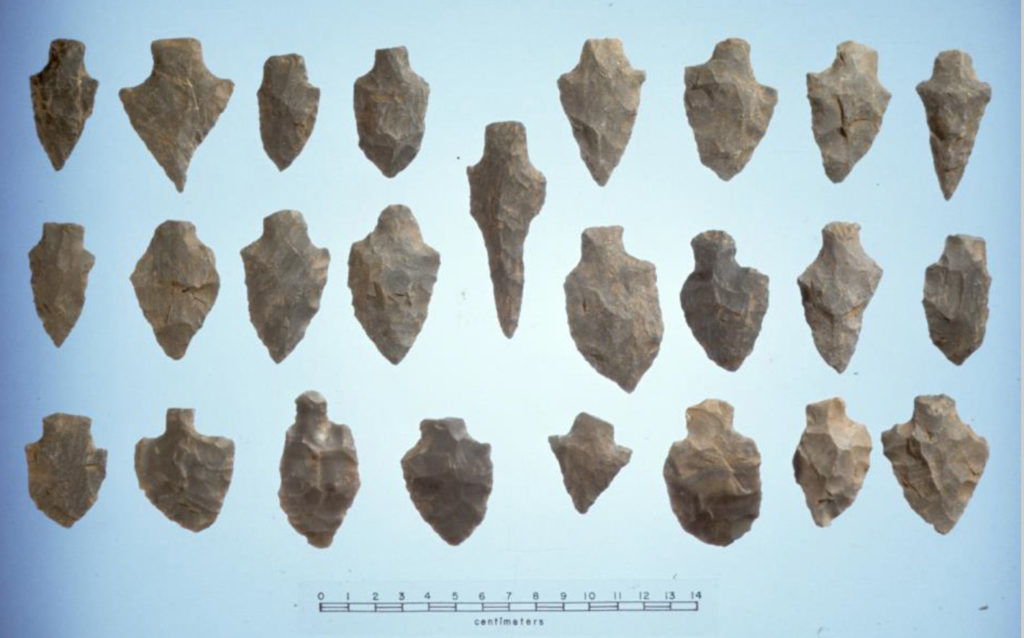
Soapstone pot
